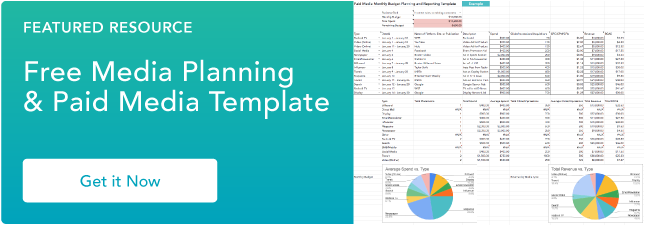The Plain English Guide to Demand-Side Platforms (DSP)
As a marketer, you might be focused on creating organic content most of the time. But you should keep in mind that paid advertising is just as important.
When you manage the paid ads for your business, you can go through individual ad managers such as Google Ads or Facebook Ads. However, that’s not the only option. You can also use demand-side platforms (DSP), which are automated, as a way to purchase and manage your online ads.
In fact, did you know that in 2020 $46.86 billion, or 88.7% of all US mobile display ad dollars, were transacted via automated means?
This means that a majority of marketers paid ads used DSPs as a way of purchasing, managing, and tracking online advertising.
Below, let’s review all the basics about DSP advertising.
With a DSP, you can purchase mobile ads on apps, banner ads on search engines, and video ads on Facebook, Instagram, Google, and even more platforms. Instead of using both Google Ads and Facebook Ads, for instance, you can purchase those ads in one place on a DSP.
The purpose of this is to make ad buying faster, cheaper, and more efficient. Now, let’s dive into how DSP platforms work and why you should use one.
DSP Advertising
So, you might be thinking, “How do DSPs work?”
DSP’s work by using programmatic advertising, which is the buying and selling of ads in real-time through an automated system. With real-time bidding, ad placements are auctioned off in milliseconds.
When you get started with DSP advertising, you’ll need to begin strategizing how much you want to spend. Think about what an effective cost per click and cost per action might be. This will help you set up your online ads so the platform knows how much to spend in any given auction.
The best DSP platforms will allow you to include multiple rich media ads, including video, images, and animation.
Now you might be wondering, “Why would I use a DSP?”
The main reason is that it makes your digital ad experience easier and more cost-effective. You can control, track, and maximize all your digital ads in one place. This means you can manage an entire ad campaign across sites on one dashboard. For example, you can show someone an ad on Google, then show them ads on Facebook, and then across other sites they visit all in one campaign. Before DSPs, those would be separate campaigns on Google and Facebook Ads.
This means you can advertise on many networks, including all the major publishers, in addition to more. With the amount of networks, you’ll have a more global reach.
Additionally, DSPs often partner with third-party data providers, giving you better tracking and reporting capabilities than a single network usually provides. And in the planning process, the targeting options are more personalized, meaning you can get better conversion rates.
When you’re choosing a platform to work with, you’ll want to look at how many ad exchanges the DSP has access to because that affects how many people you can reach. Plus, you’ll want to consider cost, training (full service or self service), support, and ease of use.
Now that you know more about DSP advertising and how it works, let’s discuss the platforms that can help you do it.
Top Demand-Side Platforms
1. Centro
Centro is an omni-channel DSP built to generate better outcomes for your ad campaigns. One of the best features is that it uses AI machine learning to automatically analyze data from numerous campaign parameters to optimize your ads.
With this DSP, you’ll be able to target hyper-local audiences across devices and multiple touchpoints. You’ll also get access to the industry’s leading exchanges, along with 25,000+ audience segments across over 30 different data providers.
2. Google Marketing Platform
Google Marketing Platform is Google’s unified advertising and analytics platform for smarter marketing and better results. This DSP has several products for both small businesses and enterprise companies, including Campaign Manager 360.
With this product, you can save time with cross-channel ad management to maximize insights and optimize media and creative performance across all your digital campaigns. The flexibility is the standout feature on this DSP. You can use third-party features and integrations so you can choose the capabilities that best help you manage and measure your campaigns.
3. Knorex
Knorex is a universal advertising platform that automates personalized marketing across channels, devices, and ad formats. You can market on Google Search, Facebook, Instagram, and LinkedIn all in one place.
This DSP also uses AI to learn from past data to predict and adjust ad budget dynamically in real-time to drive higher efficiency.
4. Jampp
Jampp is a DSP that leverages unique contextual and behavioral signals to deliver customers and in-app purchases through programmatic advertising.
The key features of this platform are user acquisition, app retargeting, geolocated ads, dynamic ads, and predictive bidding. This is mainly a mobile user acquisition and app retargeting DSP where you can focus on mobile first ads.
5. Smadex
Smadex is a mobile DSP engineered for growth. The platform uses a combination of its own programmatic advertising technology, machine learning, and first-party data.
With this platform, you can reach global audiences at scale and re-engage audiences with its retargeting capabilities.
When you choose a DSP, make sure you understand how many inventory sources it accesses, which third-party data integrations it offers, and what targeting criteria is available. To successfully run programmatic ads on a DSP, you’ll need to reach global audiences with personalized ads.
![]()

